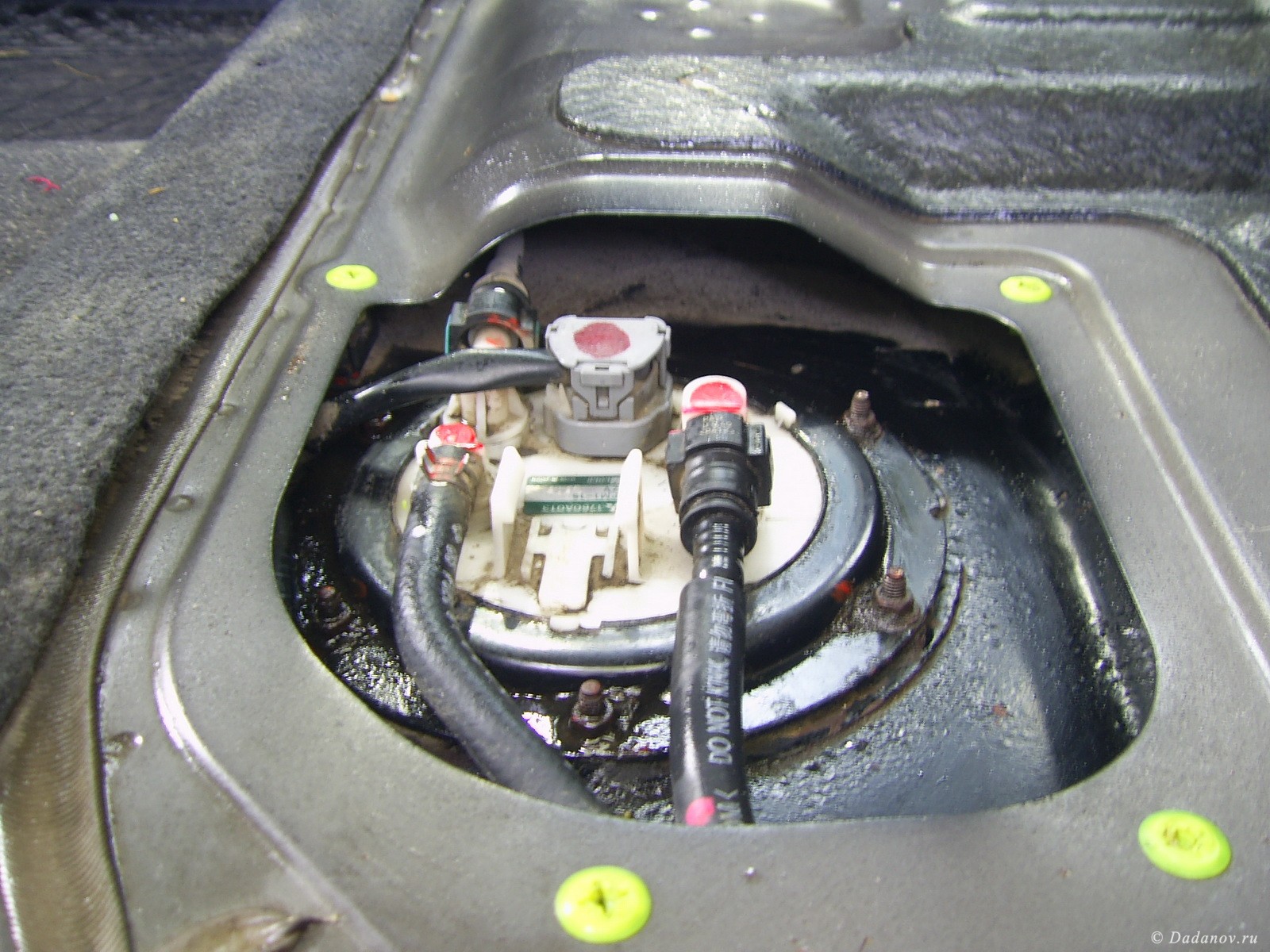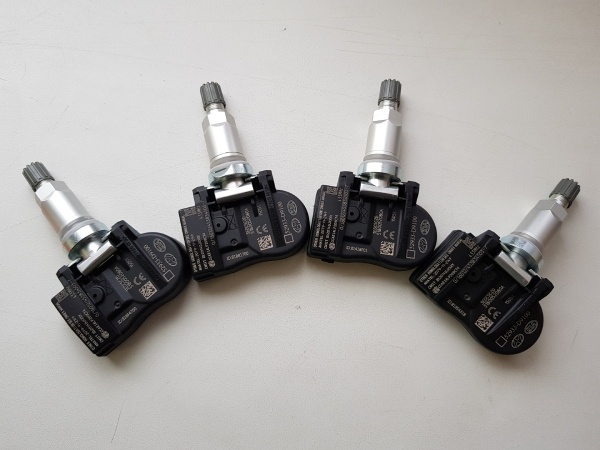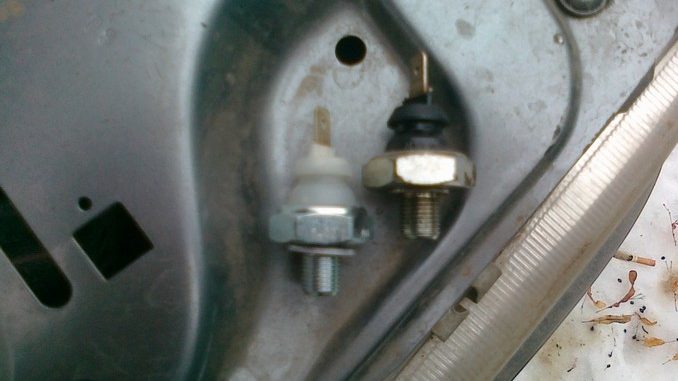
Pressure sensor in the car Audi 80
Content
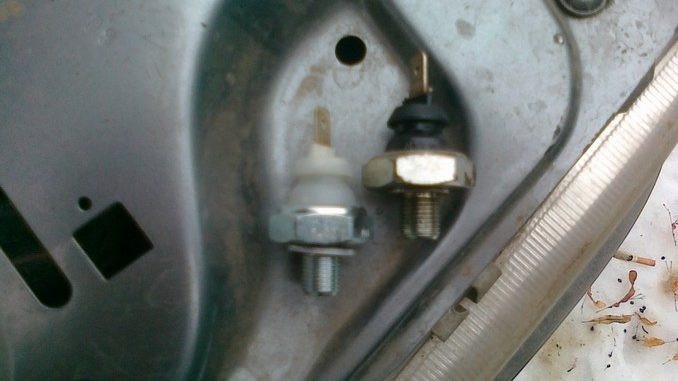
A device such as an oil pressure sensor is a device whose main purpose is to convert mechanical force signals into electrical type signals. In this case, the signals can have voltages of various types. Once decoded, these signals allow the pressure to be estimated. Today we will analyze where the pressure sensor on the Audi 80 is located, how to check it, how to manage it.
The most common are two options that work at different pressure levels: a 0,3 bar sensor and a 1,8 bar sensor. The second option is different in that it is equipped with a special white insulation. Diesel engines use 0,9 bar gauges with gray insulation.
Many drivers are interested in where the pressure sensor is located on the Audi 80. The location depends on the type of engine. On all four cylinders, the 0,3 bar device is located directly on the end of the cylinder block, on the left side of the engine compartment. With an oil pressure of 1,8 or 0,9, the kit is securely attached to the filter mount. On a five-cylinder engine, the kit is located on the left side of the cylinder block, directly opposite the hole indicating the level of oil present.
What is the Audi 80 oil pressure sensor used for?
When the engine is running, friction sometimes forms in it. In places where such problems have been found, oil must be supplied. It can be applied in various ways, such as spraying. A prerequisite for spraying is the presence of pressure. When the pressure level decreases, the amount of oil supplied decreases and this leads to malfunctions of the oil pump. As a result of a malfunction of the oil supply pump, the friction of the key elements increases significantly, as a result of which individual parts can jam, and the wear of the “car heart” accelerates. To avoid all the negative aspects, in the Audi 80 b4 lubrication system, as in other models, a supply oil pressure sensor is built in to regulate it.
The input signal is read in several ways. Usually, the driver does not receive a detailed report, he is limited to signals in the form of an oiler on the instrument panel or instruments in the cabin if the indicator has dropped to a minimum.
On other car models, the sensor may be displayed on the equipment scale with arrows. In the latest models, the pressure level in the block is used not so much for control as for rationalizing the operation of the engine.
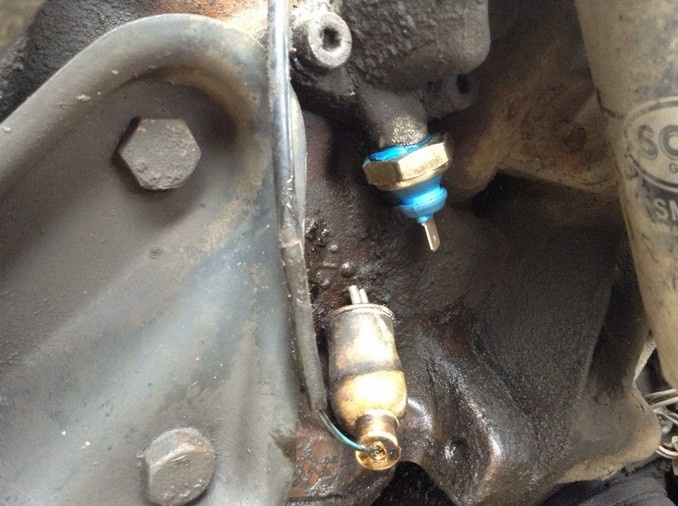
Equipment device
In equipping an outdated model, which has already become a classic, the Audi 80 b4 oil pressure sensor, measurements are based on a change in the elasticity of the membrane. Being subjected to shape change and other phenomena, the membrane exerts pressure on the rod, which compresses the liquid in the pipe. On the other hand, the compressible fluid presses on the other rod and already raises the shaft. Also, this measuring device is called a dynamometer.
Modern equipment options perform measurements using a transducer sensor. This sensor is mounted on the block with cylinders, and the measurement readings are subsequently transmitted to the on-board computer in the form of converted electronic signals. In the latest models, the function of the sensitive element lies on a special membrane, on which there is a resistor. This resistance can change the level of resistance during deformation.
Checking the oil pressure sensors
This procedure is carried out in several stages:
- First of all, you need to check the oil level.
- The condition of the wiring of both sensors is then checked (both at 0,3 bar and at 1,8 bar).
- After that, the pressure sensor is removed by 0,3 bar.
- Instead of the removed sensor, a suitable type of pressure gauge is installed.
- If you plan to use additional sensors such as VW, the next step is to screw the sensor into the test stand.
- After that, a connection is made to the mass of the device for control.
- Further, the voltage measuring device is connected to the pressure sensor through an additional cable system, and the voltage meter is also connected to the battery, i.e. to the pole.
- If everything is connected correctly and can work normally, the diode or lamp will light up.
- After the diode or lamp lights up, you need to start the engine and slowly increase the speed.
- If the pressure gauge reaches 0,15 to 0,45 bar, the indicator lamp or diode goes out. If this does not happen, you need to replace the sensor with 0,3 bar.
After that, we proceed to check the sensor for 1,8 and 0,9 bar, which is done in the following sequence:
- We disconnect the wiring of the oil pressure sensor by 0,8 bar or 0,9 bar for a diesel engine.
- After that, we connect a measuring device to study the pressure voltage level to the positive pole of the battery type and to the sensor itself.
- If everything is done correctly, the control lamp should not light up.
- After that, to check the sensor at 0,9 bar, increase the engine speed until the supplied measuring device shows a reading in the region of 0,75 bar to 1,05 bar. If now the lamp does not light up, you need to change the sensor.
- To check the sensor by 1,8, the speed is increased to 1,5-1,8 bar. The lamp should also light up here. If this does not happen, then you need to change the equipment.
The oil pressure sensors in the Audi 80 must be checked regularly. How to do it - see below.
